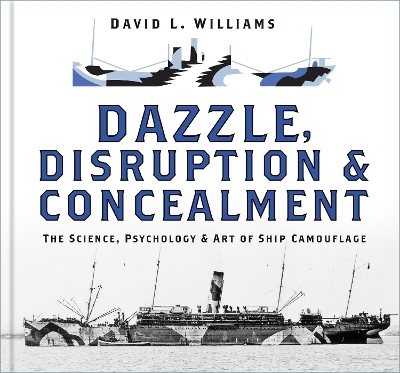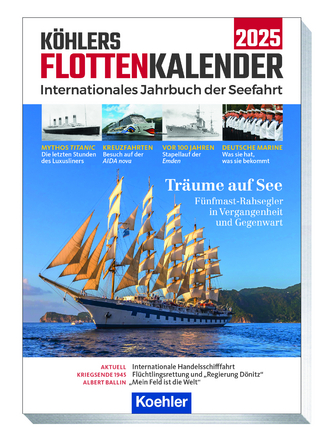
Dazzle, Disruption and Concealment
The Science, Psychology and Art of Ship Camouflage
Seiten
2022
The History Press Ltd (Verlag)
978-0-7509-9681-5 (ISBN)
The History Press Ltd (Verlag)
978-0-7509-9681-5 (ISBN)
Exploring the origins and influences of maritime camouflage
Many people are familiar with the term ‘dazzle design’, but what of its origins and objectives as a defensive practice at sea? And was it the only approach to the painted protection of merchant and naval vessels during the two world wars? David L. Williams examines the origins of maritime camouflage, how it was originally influenced by natural concealment as seen in living creatures and plants and was followed by the emergence of two fundamentally opposed schools of thought: reduced visibility and disruption to visual perception.
Dazzle, Disruption & Concealment explores the objectives and design features of each of the various strategies advocated as forms of painted protection by looking at the scientific and artistic principles involved (the behaviour of light and the process of vision). It considers their effectiveness as a means of reducing visibility or in disturbing the comprehension of crucial target attributes (ship’s speed, distance and bearing). It also identifies the key individuals engaged in maritime camouflage development as well as the institutions set up to conduct in depth research into these practices.
Many people are familiar with the term ‘dazzle design’, but what of its origins and objectives as a defensive practice at sea? And was it the only approach to the painted protection of merchant and naval vessels during the two world wars? David L. Williams examines the origins of maritime camouflage, how it was originally influenced by natural concealment as seen in living creatures and plants and was followed by the emergence of two fundamentally opposed schools of thought: reduced visibility and disruption to visual perception.
Dazzle, Disruption & Concealment explores the objectives and design features of each of the various strategies advocated as forms of painted protection by looking at the scientific and artistic principles involved (the behaviour of light and the process of vision). It considers their effectiveness as a means of reducing visibility or in disturbing the comprehension of crucial target attributes (ship’s speed, distance and bearing). It also identifies the key individuals engaged in maritime camouflage development as well as the institutions set up to conduct in depth research into these practices.
DAVID L. WILLIAMS’s background is in professional industrial photography and technical publications. He was previously responsible for the entire aircraft and hovercraft in-service support operation of Westland Aerospace. He spent time working aboard lighthouse tenders and cable layers and is an Associate of the British Institute of Professional Photographers and member of the World Ship Society. He has written over 30 books on shipping and related subjects, including Great Passenger Ships that Never Were, Made on the Isle of Wight and Cabin Class Rivals for The History Press. He lives on the Isle of Wight.
| Erscheinungsdatum | 07.10.2022 |
|---|---|
| Zusatzinfo | 38 Illustrations, color; 213 Illustrations, black and white |
| Verlagsort | Stroud |
| Sprache | englisch |
| Maße | 245 x 224 mm |
| Themenwelt | Natur / Technik ► Fahrzeuge / Flugzeuge / Schiffe ► Schiffe |
| Geisteswissenschaften ► Geschichte ► Teilgebiete der Geschichte | |
| Technik | |
| ISBN-10 | 0-7509-9681-1 / 0750996811 |
| ISBN-13 | 978-0-7509-9681-5 / 9780750996815 |
| Zustand | Neuware |
| Haben Sie eine Frage zum Produkt? |
Mehr entdecken
aus dem Bereich
aus dem Bereich
internationales Jahrbuch der Seefahrt
Buch | Softcover (2024)
Koehler in Maximilian Verlag GmbH & Co. KG
CHF 35,90


